
Lophophora decipiens: a faster-growing peyote
Peyote is a magical plant—but it takes up to a decade to mature. If you're looking for a faster alternative, the Lophophora decipiens cactus might be your best bet. Find out why below.
Lophophora decipiens is a lesser-known peyote variety, but it has started gaining attention for a very practical reason—its relatively fast growth. For many growers and collectors of psychoactive or ornamental cacti, waiting a decade for a peyote specimen to mature can be gruelling. L. decipiens offers a faster alternative without compromising the plant’s traditional character.
This article introduces Lophophora decipiens and compares it with its more famous cousin, Lophophora williamsii. We’ll also cover how to grow it, what sets it apart, and what you need to know legally and practically before adding it to your collection.
Smartshop
A unique range of natural products. From psychoactive herbs and cacti to incense, aphrodisiacs, drug tests, and more.
What is Lophophora decipiens?
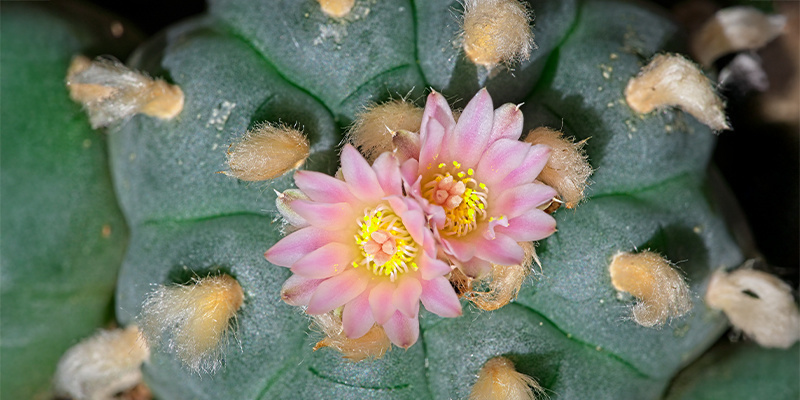
Lophophora decipiens is a naturally occurring variety of peyote within the Lophophora genus. Native to northern Mexico, it belongs to the Cactaceae family and is classified under the broader Lophophora williamsii species group. Botanists have long debated its taxonomy, with some arguing it's simply a regional form of L. williamsii rather than a separate species. However, its distinctive traits support the argument for it being a legitimate variety.
The name “decipiens” refers to its deceptive appearance, as its growth pattern and shape can vary, often mimicking different peyote forms. This cactus has a globular shape, often flatter than L. williamsii, with slightly more ribs and more pronounced tubercles. Its colour ranges from dull green to a more bluish hue, and it tends to produce pale pink or white flowers.
How does it compare to other peyote species?
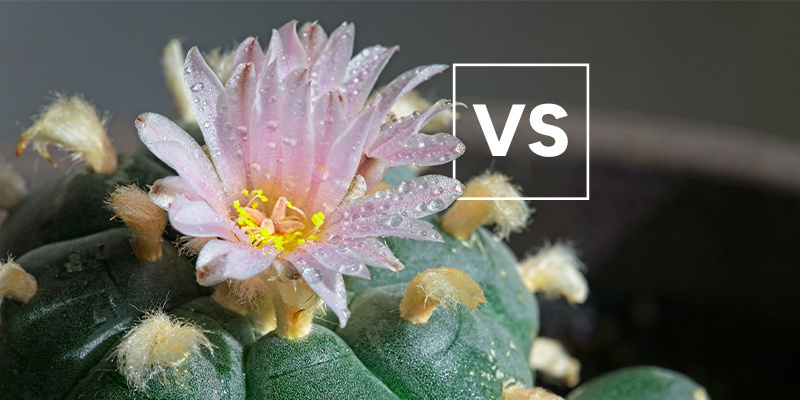
Compared to other species in the genus, it grows faster, handles stress better, and often blooms sooner. But what else makes it different? And why do many growers favour it over the classic L. williamsii?
Lophophora decipiens vs Lophophora williamsii
The most obvious difference between L. decipiens and L. williamsii is the growth rate. L. decipiens grows significantly faster under the same conditions, especially in its early stages. This alone makes it especially appealing to home growers and collectors. In terms of appearance, L. decipiens typically has more ribs, with shallower furrows and a flatter crown.
Flower colour is another point of distinction. While L. williamsii often produces deep pink blooms, L. decipiens tends towards pale pink or white flowers. The flowering cycle is also slightly different. L. decipiens is more inclined to bloom earlier in the growing season, and sometimes multiple times (depending on conditions).
Does Lophophora decipiens contain more mescaline than williamsii?
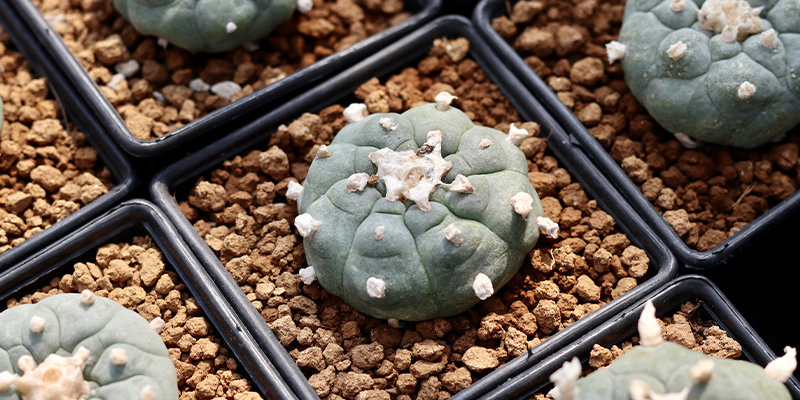
The exact mescaline content of Lophophora decipiens is unclear. Unlike Lophophora williamsii, which has been widely studied and is known to contain between 3–6% mescaline by dry weight, L. decipiens hasn't been chemically profiled to the same extent. Anecdotal reports suggest it may contain lower concentrations, making it a less reliable choice for those seeking a consistent psychedelic experience.
This lack of data means effects can vary not just between plants, but also within the same plant depending on age, growing conditions, and stress levels. If potency is your priority, L. williamsii remains the better-documented option.
Why is L. decipiens considered easier to grow?
One of the main reasons growers turn to L. decipiens is its resilience. It tolerates greater environmental variation, including temperature shifts and irregular watering. Seed germination is also more reliable, with faster sprouting and fewer losses in the early months.
In its seedling stage, L. decipiens tends to form sturdy taproots more quickly, promoting stronger anchoring and improved moisture access. It’s also less prone to damping-off and fungal infections when grown in the right medium. These qualities make it more forgiving for beginners and more efficient for experienced growers managing larger collections.
Growing Lophophora decipiens: A step-by-step guide
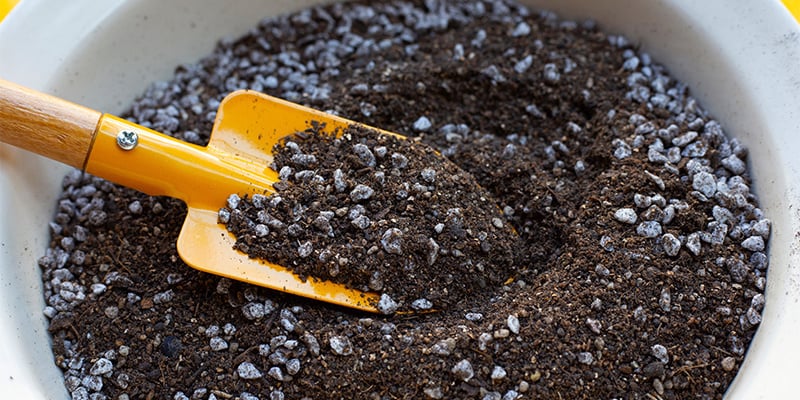
Growing Lophophora decipiens follows the same basic steps as other peyote cacti, but some small differences can help you make the most of its potential. From soil composition to pest prevention, here’s how to support healthy, steady growth.
Ideal soil mix and container
Lophophora decipiens prefers a fast-d raining mineral mix. A good base might include:
- 50% coarse sand or pumic+547e
- 25% perlite or crushed lava rock
- 25% cactus potting soil or sifted compost
Avoid organic-rich mixes, which hold moisture and increase the risk of root rot. Use shallow terracotta pots with drainage holes to allow air circulation and quick drying. For seedlings, a small tray with a clear lid can create a controlled microclimate.
Watering, light, and temperature

Like other desert cacti, L. decipiens prefers a dry–wet cycle. Water thoroughly when the soil is completely dry, then let it dry out fully again before watering. During winter, reduce watering to almost nothing.
- Light: Full sun with some shade in peak summer.
- Temperature: Thrives between 20–30°C during the day, tolerates brief drops to around 5°C if kept dry.
- Moisture: Avoid cold and damp conditions, which can cause rot. During the active growing season (spring to early autumn), increase light and warmth gradually.
Common pests and solutions
The most common pests affecting L. decipiens are:
- Spider mites: These tiny pests cause webbing and yellow spots.
- Fungus gnats: Larvae feed on roots in damp soil.
Consider quarantining new plants, and inspect regularly to catch problems early.
How fast does Lophophora decipiens grow?
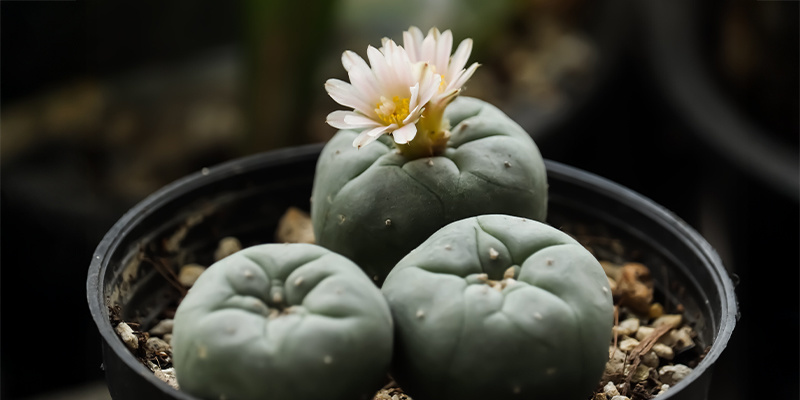
Lophophora decipiens is widely recognised and appreciated as one of the fastest-growing peyote varieties. Under ideal conditions, seeds can germinate within 5–10 days, compared to 10–14 days for L. williamsii. Within six months, seedlings often reach 1 cm in diameter. By the second year, plants can be 2–3 cm wide, and with good care, mature specimens can flower after 4–5 years.
In contrast, L. williamsii often takes 6–10 years to reach flowering size. This quicker cycle makes L. decipiens ideal for propagation, hybridisation, or simply for collectors who don’t want to wait a decade.
Is it legal to grow Lophophora decipiens?
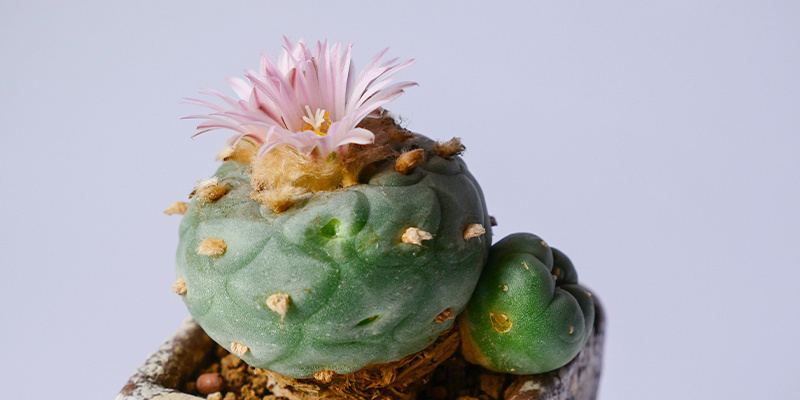
The legality of growing peyote—including L. decipiens—varies widely. In many countries, peyote is regulated due to its mescaline content. In the UK and most of Europe, Lophophora species are legal to grow as ornamental plants, provided they are not prepared for consumption.
In the US, peyote is a Schedule I substance, but exceptions exist for members of the Native American Church. Mexico considers wild peyote a protected species due to over-harvesting, and export is tightly restricted.
Culturally, peyote has been used in spiritual and healing contexts for centuries. But legal restrictions mean you should always check your local regulations before buying or growing any Lophophora species.
Lophophora decipiens: FAQ
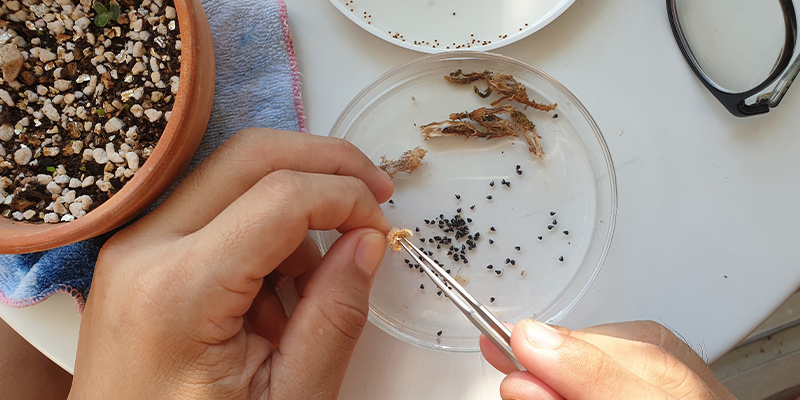
Here are some of the most common questions about Lophophora decipiens—answered clearly and concisely.
Can you eat Lophophora decipiens?
Yes, you can—but it’s not the usual choice for mescaline use. Lophophora decipiens does contain mescaline, the same hallucinogenic compound found in L. williamsii, but its alkaloid levels are less studied and likely lower. That means effects may be milder or more inconsistent. If you're looking to consume peyote for its psychoactive effects, most users prefer L. williamsii because its potency is better documented. Also, keep in mind that peyote use is illegal in many countries, unless you're part of an authorised religious group. Know the law before you consider trying it.
How do you identify Lophophora decipiens?
Look for a flatter crown, more numerous ribs (usually more than eight), and slightly pointed tubercles. Flowers are usually pale pink to white. Compared to L. williamsii, L. decipiens has a more variable appearance, which is partly why it was named “decipiens”—because it can appear deceptive or misleading.
Where can I buy seeds?
Lophophora decipiens seeds are available from specialist cactus nurseries and online ethnobotanical retailers. Always choose a reputable supplier that can guarantee seed origin. You can find seeds for sale at places like Zamnesia, which offers a selection of peyote varieties and other rare cacti.
Lophophora decipiens: Fast-growing, fascinating, and full of potential
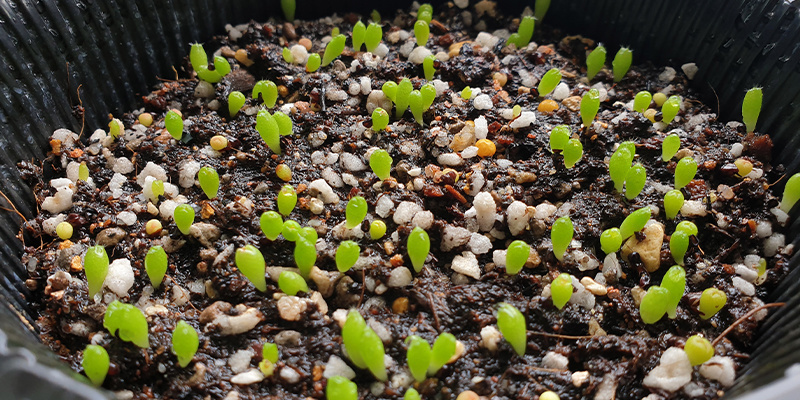
Lophophora decipiens stands out among peyote varieties for its speed, resilience, and ornamental value. Whether you're a collector, hobbyist, or cultivator, it offers an accessible and rewarding alternative to slower-growing species like L. williamsii. Its forgiving nature makes it ideal for new growers, while its unique traits provide plenty of interest for seasoned enthusiasts.
Before you start, make sure you understand your region’s legal stance on peyote cultivation. If permitted, you’ll find L. decipiens a manageable and satisfying species to grow—especially if patience isn’t your strong suit. You can browse Lophophora decipiens seeds and more at the Zamnesia store.
-
 4 min
2 June 2025
9 (legal) drugs that will induce a psychedelic trip
Interested in discovering which legal substances offer psychedelic-like effects? These 9 options might surprise you with their mind-altering potential—but be warned: not all are safe, and some are...
4 min
2 June 2025
9 (legal) drugs that will induce a psychedelic trip
Interested in discovering which legal substances offer psychedelic-like effects? These 9 options might surprise you with their mind-altering potential—but be warned: not all are safe, and some are...
-
 3 min
20 August 2017
How Do Hallucinogens, Dissociatives And Delirium-Inducing...
When most people think of trippy drugs, they automatically think of acid and shrooms. But this category of substances is actually very broad and encompasses a variety of different drugs that fall...
3 min
20 August 2017
How Do Hallucinogens, Dissociatives And Delirium-Inducing...
When most people think of trippy drugs, they automatically think of acid and shrooms. But this category of substances is actually very broad and encompasses a variety of different drugs that fall...
-
 5 min
12 June 2017
Foods That Can Make You Hallucinate
Food can cause all sorts of feelings and emotions. Despite of making us feel happy when it fills our bellies, there are foods that can excite us or make us tired, cause weird dreams, and even other...
5 min
12 June 2017
Foods That Can Make You Hallucinate
Food can cause all sorts of feelings and emotions. Despite of making us feel happy when it fills our bellies, there are foods that can excite us or make us tired, cause weird dreams, and even other...
-
 3 min
2 June 2017
Mescaline Cacti Differences
Mescaline is a psychoactive compound found in several species of cacti. Each species provides its own interpretation of the mescaline experience. How do the effects differ from species to species?...
3 min
2 June 2017
Mescaline Cacti Differences
Mescaline is a psychoactive compound found in several species of cacti. Each species provides its own interpretation of the mescaline experience. How do the effects differ from species to species?...
-
 2 min
15 November 2014
The Long-Term Effects of Peyote Use on the Brain
Peyote has been used for entheogenic practices for thousands of years - but what effect does such use have on the brain?
2 min
15 November 2014
The Long-Term Effects of Peyote Use on the Brain
Peyote has been used for entheogenic practices for thousands of years - but what effect does such use have on the brain?





 United States
United States












